Having adequate and consistent airflow is an indicator that your HVAC system is working properly. Whether it's summer or winter, you just want to be in a comfortable home, right? A dependable AC will make a significant difference in your health, mood, and even productivity. So if you have doubts about whether your AC's airflow is strong enough, we have the answers for you!
The strength of air that should come out of your vents depends on your system and its settings. Generally, the airflow from the vents should be roughly equal across your house. If it feels like you're living in the desert in one room and the North Pole in the other, then there's probably a problem with the airflow in your vents.
You may also have additional questions like: Can I measure the air coming out of the vents? What are the causes of the vent problem? How can I solve these issues? Don't worry—we'll go over the details and troubleshooting process, so keep reading!
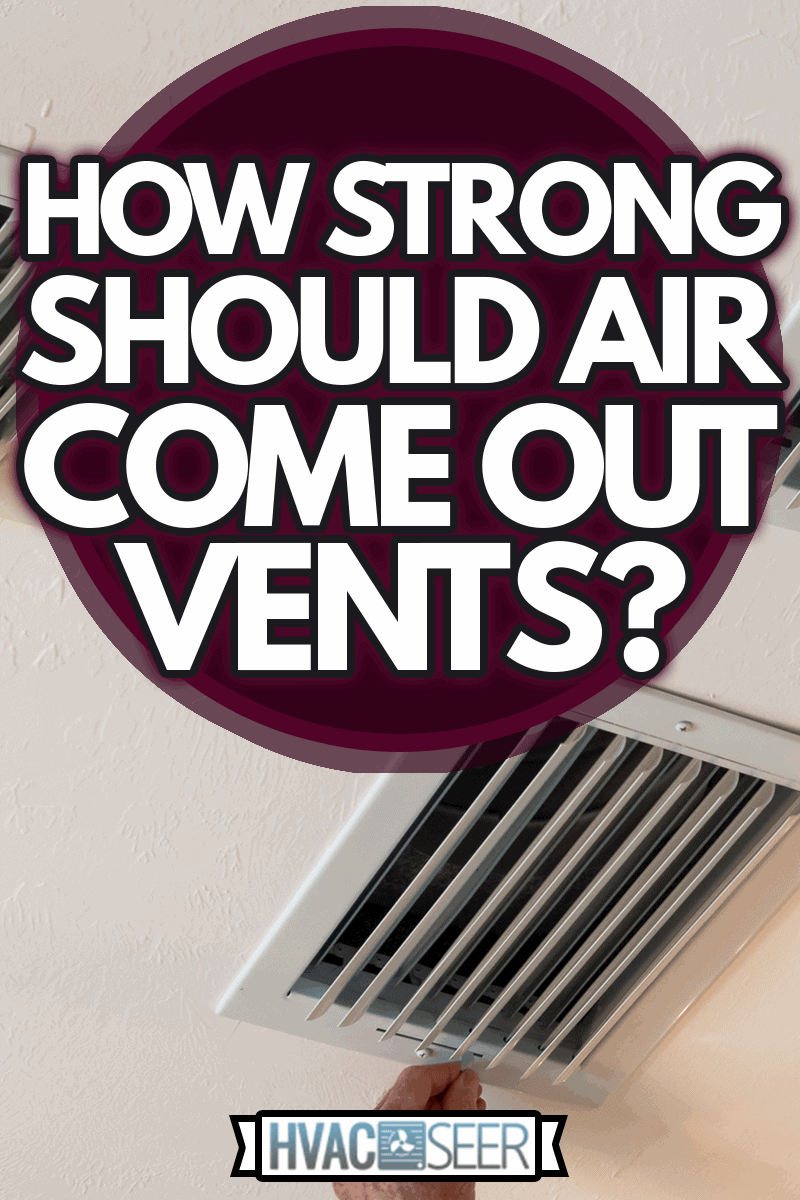
How do you measure air coming out of vents?
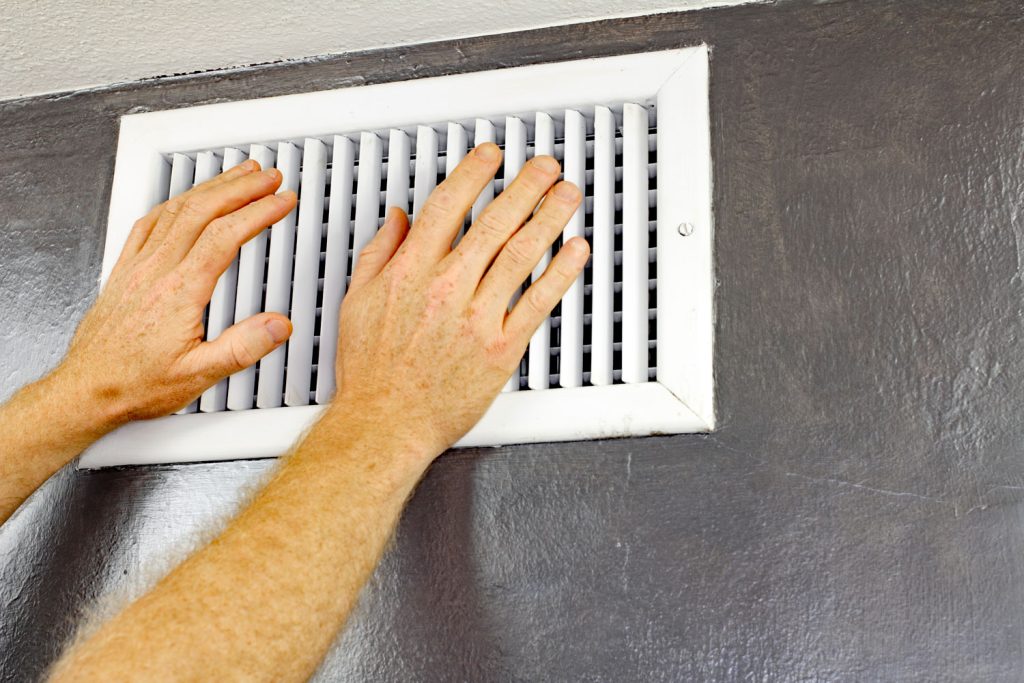
AC vents are mainly responsible for maintaining the desired air pressure in your home or office. These vents also serve as debris filters and air quality preservers. Moreover, they also can help you save additional energy bill costs later on.
Usually, there are professionals or qualified air balancers that measure, adjust or balance airflow. Here are some measurement methods that experts use:
Calculating CFM (Cubic Feet per Minute) and Airflow
Professionals use this technique to measure airflow in a room to determine safety and construction standards' proper fan sizing and air exchange rates. You may also do your own calculation manually or with a CFM calculator.
The simplified steps to measure your room's airflow are as follows:
1. First, measure the room's area. Get the room's width, length, and height from the ceiling to the floor.
2. After that, multiply the acquired width, length, and height to determine the room's cubic footage. For example, if the room is 10 feet wide, 13 feet long, and 9 feet high, then: 10 ft x 13 ft x 9 ft = 1,170 cubic feet.
3. Next, you should multiply the room's cubic volume by the number of times you want the air to exchange or turn over in an hour. For instance, if you figure the air should be exchanged three times per hour, then: 3 x 1,170 = 3510.
4. Lastly, divide your answer from the previous step by 60 to calculate CFM. For example, 3510 ÷ 60 = 58.5. Thus, the CFM is 58.5.
Note: If you are unsure about your room's measurements, the calculations, and related standards, it's best to consult a professional.
Watch this video that further explains CFM calculations:
Using An Airflow Balancing Hood
This tool verifies the HVAC system's performance based on its airflow hood. In addition, it also measures the air volume coming out of a diffuser to find areas of the system with limited airflow. This process of air balancing, testing, and adjusting an HVAC system is essential in delivering the correct amount of air to each room of a building.
Using A Non-Contact Tachometer
A non-contact tachometer, also known as a non-touch tachometer or photo tachometer, is a device that measures the working speed of an engine or a system. The operating speed is measured in revolutions per minute or RPM.
You can use non-contact tachometers, especially when contact measurements aren't possible due to safety concerns or space restrictions.
Why is there barely any air coming out of the vents? [and what to do]
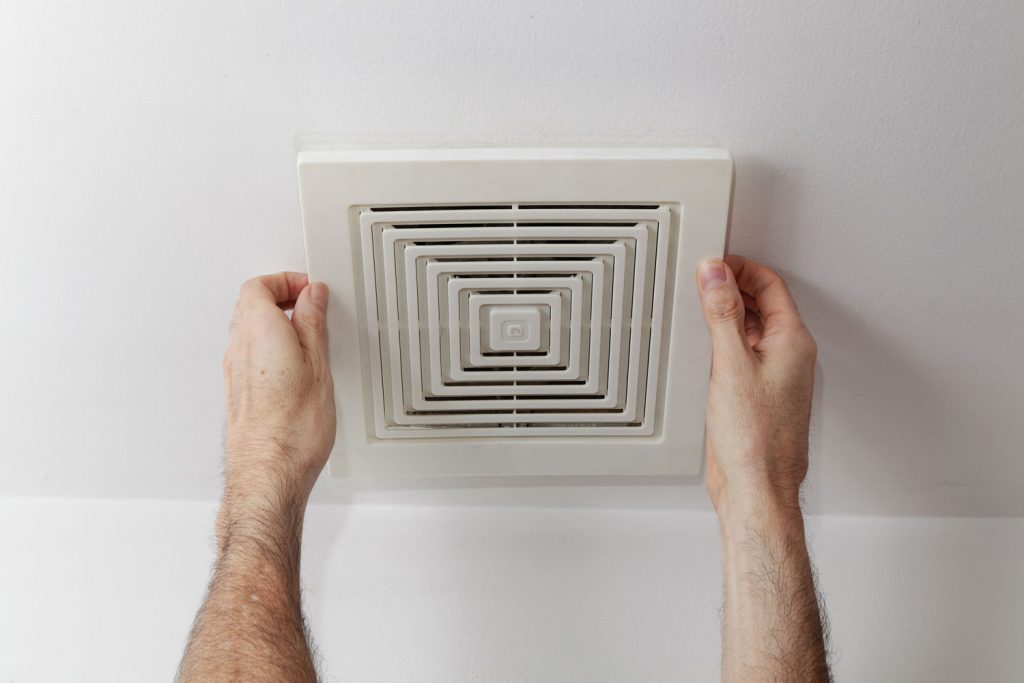
If you feel that air hardly comes out of your vents, here are the possible reasons and the potential fixes:
Blocked or Closed Vents
This may be the most common reason for an unresponsive AC. If the vent is blocked, the air won't be able to enter and disperse itself freely. So to fix it, remove all the possible obstructions like furniture, boxes, or debris.
After doing so, if the airflow still hasn't improved, then you should proceed down the list.
Closed Damp Valves
Dampers are responsible for airflow regulation. Automated dampers are automatically regulated by the thermostat and positioned based on your settings. If you think that there's a problem with your automated damper, the issue is most likely in the thermostat.
However, if you have manual dampers, you should check if they are in the correct position. You may locate the dampers in your ductwork and use a lever to change the position of the valve.
Dirty or Blocked Ducts
Air filters keep your air ducts clean and block dirt from your AC system. However, filters aren't a hundred percent flawless as some particles can still pass through the system. Due to moisture or static pressure, these small particles will stick to the ducts. This dirt build-up may attract different pests and might become a bigger issue later on.
The best way to solve this problem is to clean the ducts consistently and thoroughly. You may seek professional help to completely remove dust or debris, as doing it yourself may cause more harm than good.
Leaking Ducts
There shouldn't be any holes and gaps in your ducts. The returns and the vents are the only entrances and exit your HVAC should have. If some of your ducts have leaks, it is best to remove the damaged ducts, seal all the leaks, or install new insulation.
Misshapen Ducts
Your HVAC system ducts may come in various shapes, sizes, designs, and structures. While the majority of the ducts are made of harder metal, some are made of flexible insulated plastic with wire ribbing. This is good for bending purposes. However, the said flexibility can pose a problem. These flexible ducts can restrict the system's airflow.
If you can't undo the flex-duct damage, call a professional for help.
Restricted Air Filters
If the air filters are left dirty and clogged for months, and more so if you have pets at home, this may cause your system to struggle to have adequate airflow. The best fix is to remove all the dirt or debris. You can also change the filter as suggested by your system's manufacturer.
How can I improve the airflow in my room?
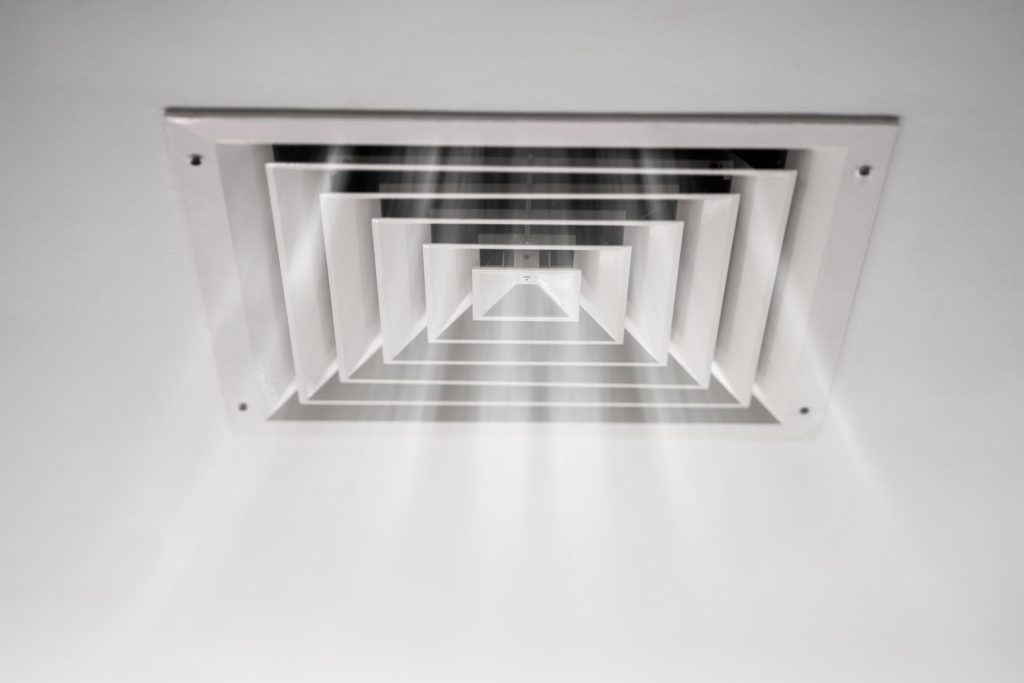
After determining the possible causes of the issues in your vents, you need to work on improving the airflow in your room. Improving your home's airflow also helps reduce condensation, residue, and mold that may harm your family's health.
Apply any of these techniques to improve your room's airflow:
Invest in a ventilator
The most effective way to improve airflow is to invest in an HVAC component like an energy recovery ventilator (ERV). ERVs increase airflow, lower humidity, and put less stress on your HVAC system, thus boosting your HVAC efficiency and keeping your home more comfortable.
Click here to see this Panasonic ERV on Amazon.
Check vents and registers
This is the simplest way to increase the airflow in your home. You must ensure that every register is open or that the dampers are correctly positioned.
Open the registers on the upper floor during warm weather and partially close those on the first floor or basement. Reverse the process during cold weather.
If several rooms in your home aren't regularly used or don't need as much cooling as other rooms, you should talk to an expert about zoning systems. This is a process of creating zones within your HVAC system to provide you with greater temperature control and efficient airflow.
Consider duct cleaning
Even if the air filters do their jobs of trapping dust and dirt, these pollutants can accumulate and hinder airflow over time. They may cause cracks and mold and may even attract pests. Duct cleaning is the solution for this. It is best to call an expert about this problem.
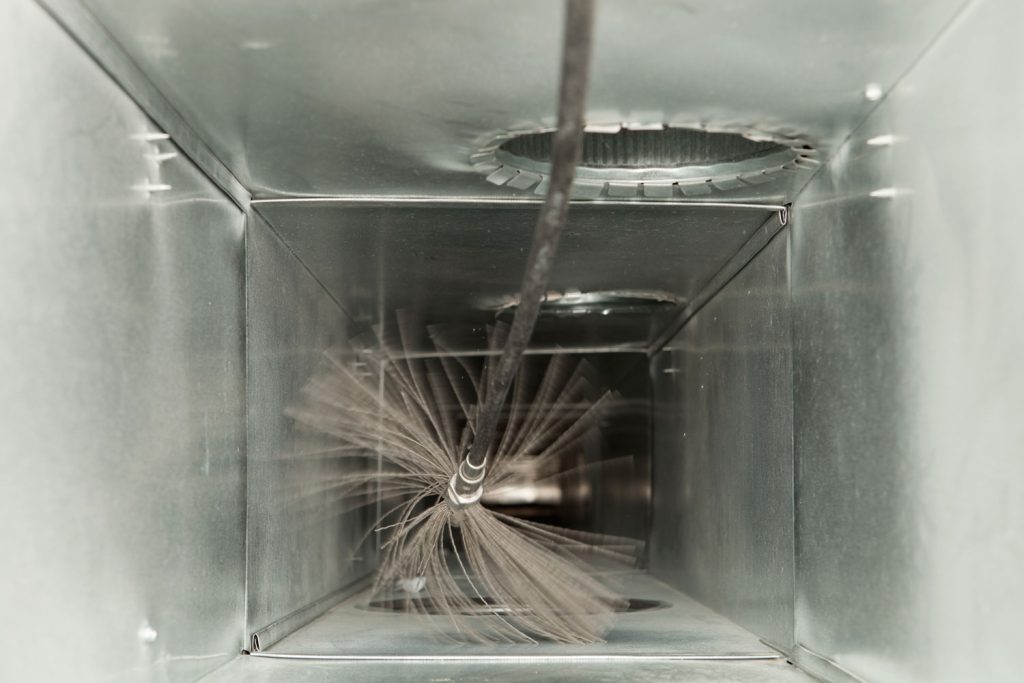
Consider using an air cleaner
You may also consider using a portable high-efficiency particulate air (HEPA) cleaner as the Center for Disease Control Prevention (CDC) suggests. These filters trap particles that people exhale when they breathe, talk, cough, or sneeze.
Observe regular HVAC maintenance
Prevention is better than the cure. Having a constant and consistent checkup of your HVAC may seem unimportant, especially if your system is new. However, conducting daily maintenance can create a big difference in how your AC operates.
This also indicates responsible homeownership. It's a proactive and preventative undertaking, which means that this helps prevent future problems from occurring. It also enables optimal air quality and energy efficiency, making your AC live a longer and better life.
Final Takeaways
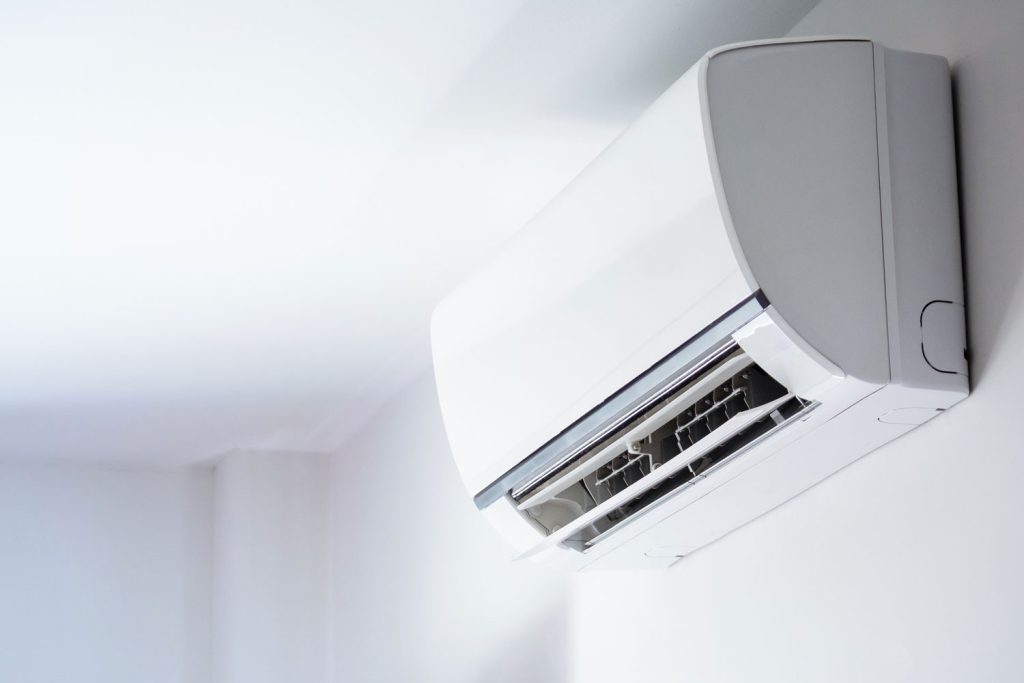
We hope that this guide has helped you better understand your AC vents! Following those troubleshoot tips may also provide a notable improvement in your AC's airflow.
Also, remember to regularly check your AC system and vents to ensure its efficiency and longer functioning life.
If you find this article helpful, you may also want to check out these other posts below about HVAC vents.

